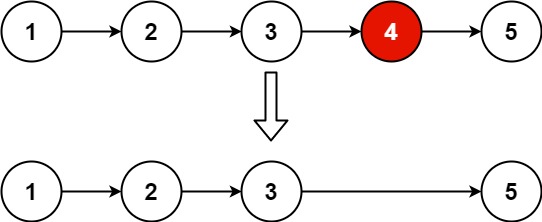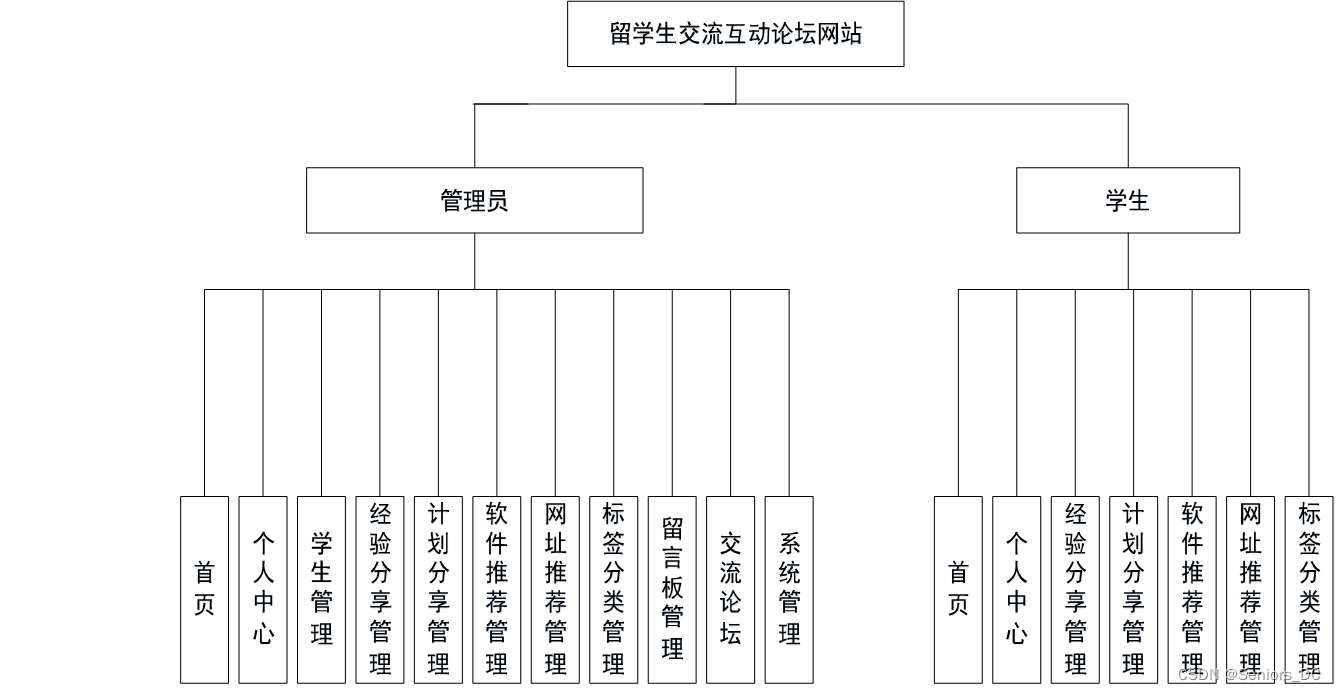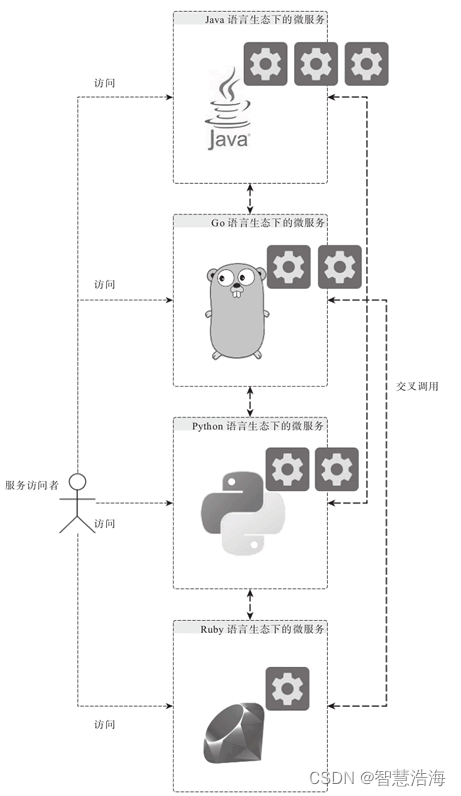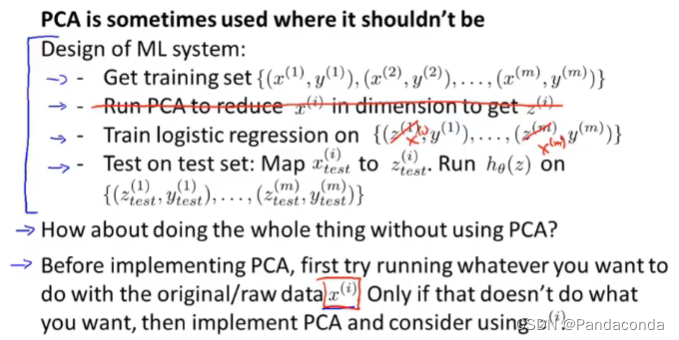文章目录
- 19. 删除链表的倒数第 N 个结点:
- 样例 1:
- 样例 2:
- 样例 3:
- 提示:
- 原题传送门:
- 分析
- 题解
- rust
- go
- c++
- python
- java
19. 删除链表的倒数第 N 个结点:
给你一个链表,删除链表的倒数第 n 个结点,并且返回链表的头结点。
样例 1:

输入:
head = [1,2,3,4,5], n = 2
输出:
[1,2,3,5]
样例 2:
输入:
head = [1], n = 1
输出:
[]
样例 3:
输入:
head = [1,2], n = 1
输出:
[1]
提示:
- 链表中结点的数目为
sz 1 <= sz <= 300 <= Node.val <= 1001 <= n <= sz
原题传送门:
https://leetcode.cn/problems/remove-nth-node-from-end-of-list/
分析
- 面对这道算法题目,二当家的陷入了沉思。
- 要删除倒数第N个结点,首先要找到倒数第N+1个结点,然后让这个结点的next指向倒数第N-1个结点。
- 要找到倒数第N+1个结点,首先考虑要取得链表的长度,然后就知道这个结点的正数位置,这样需要遍历两次链表。
- 还可以使用动态数组,也就是list,一边遍历链表,一边把结点的引用或者指针放入,这样就可以在知道总数之后,直接按照下标取得目标结点,时间复杂度降低了,但是却是以空间为代价。
- 事实上,我们可以只用常数空间的代价换来时间复杂度的降低,倒数第N+1个结点就是距离最后一个结点N个位置的结点,可以用双指针,先让快指针遍历N个结点,之后快慢指针同时遍历链表,等到快指针指向空,慢指针刚好指向我们要的结果。要注意的一点是,因为有可能最终要删除的结点是头结点,为了让算法能统一处理所有情况,需要在头结点前面加入一个哑结点,让慢指针指向这个哑结点,也就是头结点的前一个结点,这样链表中的每个结点就都有了前结点。
题解
rust
// Definition for singly-linked list.
// #[derive(PartialEq, Eq, Clone, Debug)]
// pub struct ListNode {
// pub val: i32,
// pub next: Option<Box<ListNode>>
// }
//
// impl ListNode {
// #[inline]
// fn new(val: i32) -> Self {
// ListNode {
// next: None,
// val
// }
// }
// }
impl Solution {
pub fn remove_nth_from_end(head: Option<Box<ListNode>>, mut n: i32) -> Option<Box<ListNode>> {
let mut dummy = Some(Box::new(ListNode::new(-1)));
dummy.as_mut().unwrap().next = head;
let mut slow = &mut dummy;
let mut fast = &slow.clone();
while n >= 0 {
if let Some(n) = fast {
fast = &n.next;
} else {
return None;
}
n -= 1;
}
while fast.is_some() {
slow = &mut slow.as_mut().unwrap().next;
fast = &fast.as_ref().unwrap().next;
}
slow.as_mut().unwrap().next = slow.as_mut().unwrap().next.as_mut().unwrap().next.take();
return dummy.unwrap().next;
}
}
go
/**
* Definition for singly-linked list.
* type ListNode struct {
* Val int
* Next *ListNode
* }
*/
func removeNthFromEnd(head *ListNode, n int) *ListNode {
dummy := &ListNode{0, head}
fast, slow := head, dummy
for i := 0; i < n; i++ {
fast = fast.Next
}
for ; fast != nil; fast = fast.Next {
slow = slow.Next
}
slow.Next = slow.Next.Next
return dummy.Next
}
c++
/**
* Definition for singly-linked list.
* struct ListNode {
* int val;
* ListNode *next;
* ListNode() : val(0), next(nullptr) {}
* ListNode(int x) : val(x), next(nullptr) {}
* ListNode(int x, ListNode *next) : val(x), next(next) {}
* };
*/
class Solution {
public:
ListNode* removeNthFromEnd(ListNode* head, int n) {
ListNode dummy = ListNode(0, head);
ListNode *fast = head;
ListNode *slow = &dummy;
for (int i = 0; i < n; ++i) {
fast = fast->next;
}
while (fast) {
fast = fast->next;
slow = slow->next;
}
slow->next = slow->next->next;
return dummy.next;
}
};
python
# Definition for singly-linked list.
# class ListNode:
# def __init__(self, val=0, next=None):
# self.val = val
# self.next = next
class Solution:
def removeNthFromEnd(self, head: Optional[ListNode], n: int) -> Optional[ListNode]:
dummy = ListNode(0, head)
fast = head
slow = dummy
for i in range(n):
fast = fast.next
while fast:
fast = fast.next
slow = slow.next
slow.next = slow.next.next
return dummy.next
java
/**
* Definition for singly-linked list.
* public class ListNode {
* int val;
* ListNode next;
* ListNode() {}
* ListNode(int val) { this.val = val; }
* ListNode(int val, ListNode next) { this.val = val; this.next = next; }
* }
*/
class Solution {
public ListNode removeNthFromEnd(ListNode head, int n) {
ListNode dummy = new ListNode(0, head);
ListNode fast = head;
ListNode slow = dummy;
for (int i = 0; i < n; ++i) {
fast = fast.next;
}
while (fast != null) {
fast = fast.next;
slow = slow.next;
}
slow.next = slow.next.next;
return dummy.next;
}
}
非常感谢你阅读本文~
欢迎【点赞】【收藏】【评论】~
放弃不难,但坚持一定很酷~
希望我们大家都能每天进步一点点~
本文由 二当家的白帽子:https://le-yi.blog.csdn.net/ 博客原创~


















